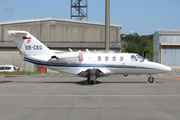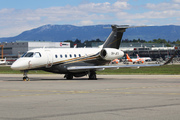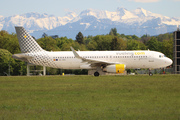Dépêches
GE Global Research To Partner With Livermore National Lab and Universities On Supercomputing Project
Dépèche transmise le 9 avril 2012 par Business Wire

GE Global Research To Partner With Livermore National Lab and Universities On Supercomputing Project
NISKAYUNA, N.Y.--(BUSINESS WIRE)--GE Global Research has been selected by Lawrence Livermore National Laboratory (LLNL) to participate in an incubator program that will use high-performance computing (HPC) in an effort to accelerate development of next-generation fuel injectors for GE’s engine fleet. Global Research will collaborate with Arizona State University (ASU) and Cornell University on this project.
“Using the supercomputer, we will apply a methodology called Large Eddy Simulation (LES) to model the fuel injector. The supercomputer will give us a 360 degree view of the inside of the injector, so that we can better understand the physics behind the design”
GE mechanical engineer Madhu Pai, from the Computational Combustion Lab (ATMS) will have six months of dedicated access to a portion of the Sierra supercomputer - one of the most powerful in the world – to study the physics behind the working of the fuel injector to optimize its design. Pai discusses the importance of supercomputing in supporting these studies.
“Currently fuel injectors are designed after lengthy optimization trials, partly because today’s fuel injectors have complex geometries that challenge conventional wisdom on how these injectors work. High-fidelity computer simulations can significantly reduce the number of trials and can provide insight into why a fuel injector behaves the way it does,” said Pai.
Scientists hope to gain a better understanding of critical unsteady spray phenomena observed in fuel injectors used in today’s liquid-fueled engines. These unsteady spray phenomena are sometimes inaccessible to experimental measurements. Computer simulations can provide much needed insight into the origin of the unsteadiness, but doing this requires very powerful supercomputers to accurately capture the underlying physics.
“Using the supercomputer, we will apply a methodology called Large Eddy Simulation (LES) to model the fuel injector. The supercomputer will give us a 360 degree view of the inside of the injector, so that we can better understand the physics behind the design,” said Pai. “Having a better understanding of how the fuel/air mixture combusts will help us ultimately build more powerful engines that consume less fuel and have lower emissions. HPC will ultimately help in reducing development time and cost of the fuel injector.”
Aircraft fuel injectors are being studied in this trial, but successful testing of this computer simulation methodology could yield new insights that benefit other GE products, including the fuel injectors used in locomotives and land-based gas turbines. The methodology can potentially be applied to study nebulizers for aerosol delivery.
Access to LLNL’s supercomputing pilot program, known as “hpc4energy”, was highly sought after. More than 30 companies applied; GE Global Research was one of six selected. The goal of the program is to facilitate more R&D engagement between the National Labs and energy companies to help increase America’s economic competitiveness.
The supercomputing project will begin in April at the LLNL’s facility in California.
Details on the LLNL incubator program are available at http://hpc4energy.org/incubator/.
About GE Global Research
GE Global Research is the hub of technology development for all of GE's businesses. Our scientists and engineers redefine what’s possible, drive growth for our businesses and find answers to some of the world’s toughest problems.
We innovate 24 hours a day, with sites in Niskayuna, New York; Bangalore, India; Shanghai, China; Munich, Germany; and a fifth global research facility to open in Rio de Janeiro, Brazil in 2012. Visit GE Global Research on the web at www.ge.com/research. Connect with our technologists at http://edisonsdesk.com and http://twitter.com/edisonsdesk.
Photos/Multimedia Gallery Available: http://www.businesswire.com/cgi-bin/mmg.cgi?eid=50232261&lang=en
- 26/04 Norse Atlantic Airways s'envole vers Las Vegas
- 26/04 easyJet a réceptionné son 400e Airbus
- 26/04 Icelandair : résultats mars 2024
- 26/04 Air France dévoile une nouvelle campagne publicitaire
- 26/04 Volotea inaugure sa liaison entre Vérone et Bordeaux
- 26/04 Ryanair célèbre ses 25 ans à l'aéroport de Biarritz
- 24/04Ibis Styles London Heathrow : l'hôtel géré par un passionné d'aviation pour les passionnés d'aviation (photos + vidéos)
- 23/04 SkyUp renouvelle son partenariat avec Wizz Air
- 23/04 Play : résultats de mars 2024
- 23/04 Les garde-côtes japonais commande trois Airbus H225 supplémentaires
- 23/04 Vueling et Make-A-Wish France signent un partenariat
- 23/04 TUI annonce ses destinations au départ de Deauville pour l'été 2024.
- 23/04 Twin Jet renforce son programme de vols sur la ligne Toulouse/Rennes
- 23/04 Norse Atlantic Airways : résultats du mois de mars 2024
- 23/04 Volotea renforce son offre entre Lille et le Maroc
- 22/04 Finnair a dévoilé son programme de vol pour les saisons hiver 2024 et été 2025
- 22/04 Qatar Airways annonce le lancement de vols à destination de Kinshasa
- 22/04 Vietnam Airlines et CAE prolongent leur accord
- 22/04 Mermoz Academy de Tours commande des Tecnam P-Mentor
- 22/04 Transavia France reçoit son 2e Airbus A320neo







